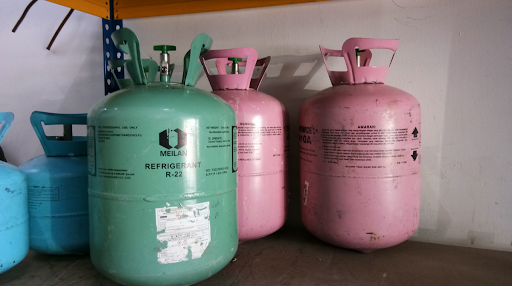
Fads come and go, and so do refrigerants. Over the years, governments and other regulatory bodies have increased regulations on HVAC refrigerants. Typically, due to environmental concerns like ozone depletion or global warming, refrigerants are phased out over time and require replacements. Although production and import of these refrigerants may be outlawed, many pieces of equipment that require such refrigerants will still be in service.
R22 is one of the most common refrigerants facility managers may come across that has been phased out. A large number of machines manufactured prior to 2010 (many of which are still active) use R22. Knowing the refrigerants used in your facility’s equipment is the first step in understanding how to approach maintenance and budgeting for capital expenditures in the coming years. So what are the main issues with refrigerants like R22 - and what should you do?
What’s Wrong With R22 Refrigerant?
R22 is actually a very efficient refrigerant. The downside of R22 is that when it leaks into the atmosphere, it begins to deplete the ozone layer. For this, and many other reasons, governments around the world agreed to phase out the production of these types of refrigerants. The EPA set January 1, 2020 as the final day that R22 would be allowed to be imported or produced in the United States. That means the price of R22 will continue to go up as it becomes more and more scarce.
New Refrigerant Prices
R22 isn’t the only type of refrigerant being phased out. Many of the refrigerants that became alternatives to R22, like R410a, are now in the process of being phased out starting in 2024. Knowing how the regulations are changing can help you plan capital expenditures and preventative maintenance programs in a cost-effective manner. If your facility still uses any equipment with R22, it’s important to begin planning for a change-out because repairs will continue to become increasingly expensive.
Related: Pricing Out Budgets - What Needs to Be Replaced?
R22 currently costs upwards of $105 per pound of refrigerant. Newer refrigerants like R410A cost around $30 per pound. As time goes on, these prices will only continue to increase. Since no more R22 is going to the market, even something as minor as topping off the charge on a system can be prohibitively expensive and make a change-out the more attractive option.
What to Do: Replace and Save With Rebates
Since R22 can no longer be imported or produced in the US, the price of the refrigerant will continue to increase. While planning for equipment changeouts with newer refrigerants is usually the preferred route, there are options to help keep your equipment operational for a bit longer.
While there are no drop-in replacements that are as good as R22, decent replacements are on the market. Most of these result in a system with voided warranties (and either a more dangerous refrigerant or a reduction in capacity). The trade-off is that you can put off the cost of a full replacement for a little while longer. Some of the most common R22 drop-in replacements are:
- RS-44B
- NU-22
- MO-99
- R407C
Typically, all of the oil and R22 will be drained from the system and the lines will be flushed before replacing the system with one of these drop-in refrigerants. Any work involving refrigerants should be done by an EPA 608 certified technician. If you’re concerned about cost, look into options involving rebates and incentives.
Rebate Incentives for Energy Efficient Equipment
For those living in BGE service areas, there are rebates and incentives being offered that may help you with this decision. While the rebates may seem less than the investment to purchase new equipment, also take into consideration the addition of vast savings that will be seen as R22 refrigerant continues to rise in price due to its limited and depleting supply in the US. Your organization will also see savings in energy costs thanks to new energy efficient equipment, which will help move your organization or business in a more eco-friendly direction to boot!
Planning equipment maintenance and estimating usable choices can be difficult enough without regulations making things even more complicated. When working with equipment using R22 refrigerant, having an expert on your side can make the process much easier. Reach out to Tate to develop a plan for maintaining and replacing R22 equipment so that costs don’t sneak up on you in the future.
